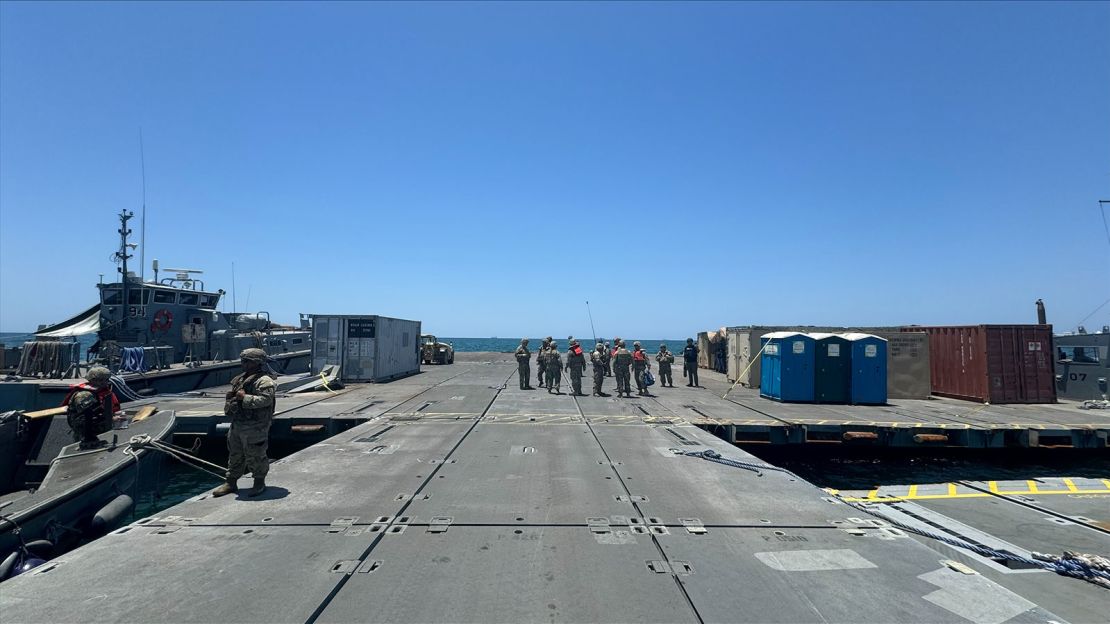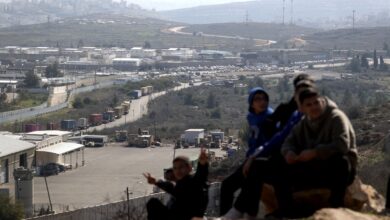
After a series of mishaps, trucks of humanitarian aid are now beginning to roll onto the US military pier off the Gaza coast at a steadier pace.
But enormous problems still loom ashore.
The US military says it is now moving about 800 pallets of humanitarian aid per day to Gaza via the temporary pier, or roughly 40 trucks. But for now, that aid isn’t helping to alleviate the worsening humanitarian conditions in Gaza, where more than 2 million people are facing crisis, emergency, or catastrophic levels of food insecurity according to a new report.
More than 6,000 pallets of aid delivered via the pier are stacked and awaiting pickup onshore, US military officials said, as the World Food Program has suspended aid collections due to security concerns.
CNN was granted access to the pier on Tuesday for the first time since it was first anchored to the Gaza coastline last month, witnessing trucks driving off a logistical vessel, across the pier and onto the Gaza shoreline.

The pier is composed of interlocking floating platforms made of hundreds of tons of steel that rumble as each wave passes underneath. Tug boats on either side help keep the platform stable. An Israeli military division is charged with ensuring the security of US military personnel and civilian truck drivers in the area and a US C-RAM air defense system capable of intercepting mortars provides an extra layer of protection.
The visit also gave CNN rare access to witness up close the tremendous destruction that nearly nine months of war have wrought on Gaza’s coastline, with most buildings in sight either flattened or heavily damaged.

Beyond the bombed-out buildings, the humanitarian situation in Gaza is growing increasingly desperate once again, particularly in northern Gaza, where hunger is on the rise. Humanitarian aid operations in Gaza have been severely hampered by an increase in Israeli military operations over the past month and humanitarian aid officials say lawlessness and looting are also on the rise.
The Israeli military says it has been getting hundreds of aid trucks into Gaza recently, blaming humanitarian aid agencies’ lack of capacity for not picking up and distributing the aid. But aid groups say their efforts are hampered by a lack of communication with the Israeli military that leaves them at risk of being caught in the crossfire.
US President Joe Biden announced plans to build the pier during his State of the Union address, vowing it would “enable a massive increase” in humanitarian aid getting into Gaza.
But bad weather and rough seas have hampered that effort, damaging the pier and taking it offline for weeks over the last month-and-a-half.
The Pentagon has said it is committed to keeping the pier operational, despite reports that it was considering shutting the project down altogether.
Pressed on criticism from humanitarian aid groups that the US’s $230-million effort would have been better spent pressuring Israel to get more aid into Gaza via land routes, Capt. Joel Stewart, the senior Navy officer involved in the operation, told CNN the pier was always intended to be “a surge response” and not a “long-term solution.”
“The sea is a difficult task-mistress. Unpredictable. Each wave is different than the last, so dealing with that is a challenge,” he said, “but we’ve adapted to that and I think we’re in a better position now than we were initially.”




